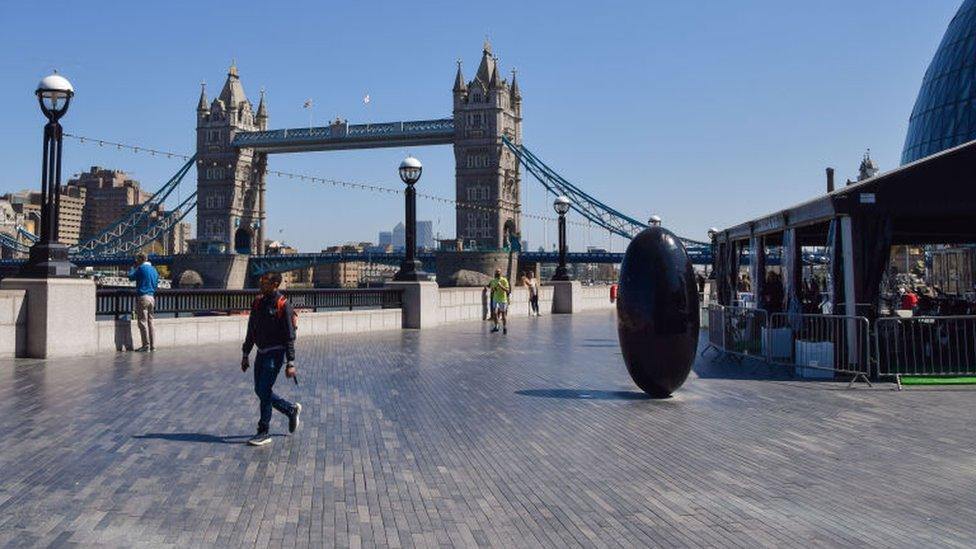London: Is it time to build on the green belt to meet housing demand?
- Published
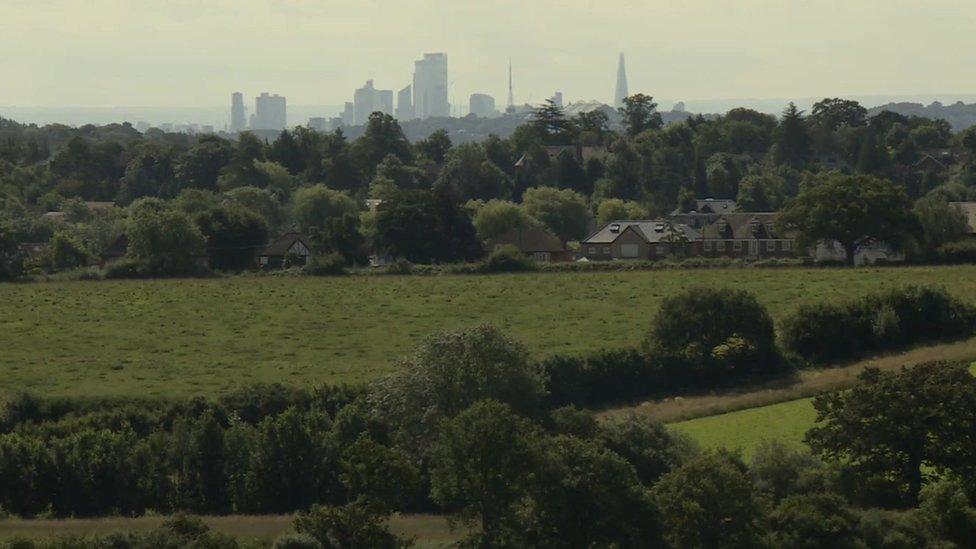
The Metropolitan Green Belt is more than one million acres of protected land around London.
According to its supporters, London's green belt is the ultimate guarantee that the land is kept green and pleasant. But as pressure on housing in London increases is it time to build on the green belt?
From a hill looking south over a large, green swathe of lush pasture you can see kestrels and kites swooping in the distance. There are even cows in the distant fields.
We could be in the Chilterns or the Cotswolds if it were not for the hum of the M25 in the distance.
The field is in Enfield, which is now at the forefront of a debate about the green belt and what it is for.
Rob Hayward, a tenant farmer and former Conservative councillor, has farmed on these fields for generations. He is worried the council will try to move into the green belt and build homes.
"These are the lungs of London," Mr Hayward said.
"You have only got to look at how beautiful it is. It's fantastic but I'm worried it's not just my livelihood but my children's livelihood. It's our home and everything."
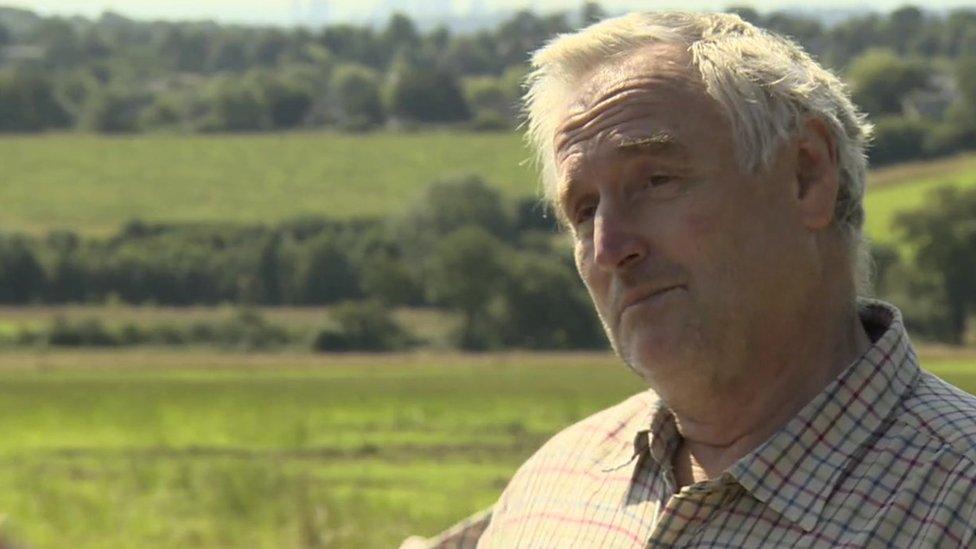
Rob Hayward described the green belt as the "lungs of London"
The Metropolitan Green Belt, as it's officially known, is a mass of more than one million acres (405,700 hectares) that encircles London, crossing the border of dozens of councils.
It was designed to stop urban sprawl, as well as to preserve the "special character of historic towns" around London.
Sweeping changes to England's planning rules, announced by Prime Minister Boris Johnson, would allow building on the green belt, but only in "exceptional circumstances".
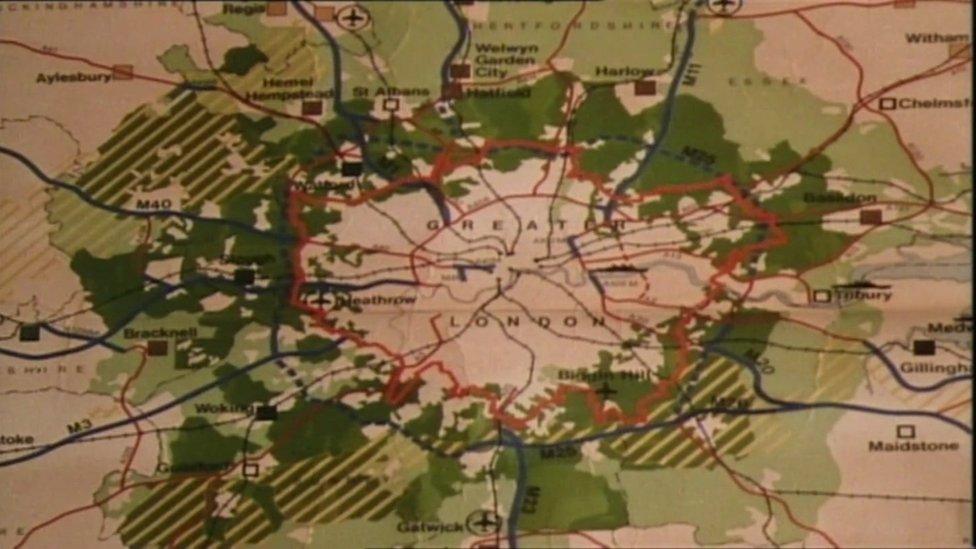
The green belt is a product of post-war planning policy
But, according to the London Green Belt Council, there are currently plans to build more than 233,000 new houses in the green belt - a 200% increase in developments since 2016.
Looking back into the archives, the argument for the green belt hasn't changed since its beginnings in the 1950s.
In 1980, Lesley Lovelock went to court to fight plans to build the M25 motorway 300m (1,000ft) from her home.
She said: "London is so polluted and congested we need green belt to give us fresh air."
She lost and the M25 went ahead.
In 1983, developers were trying to get permission to build on rundown land in the green belt in Hillingdon.
The then chair of the Greater London Council Planning Committee said: "We are not prepared to give it away to developers. It is effectively giving away our future."
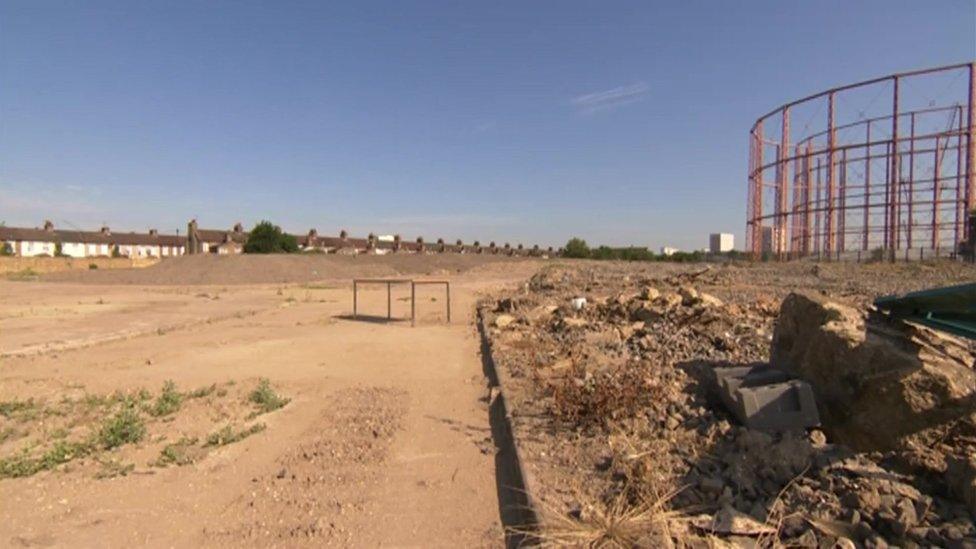
Campaigners say there is scope to build 250,000 homes on previously developed land, known as brownfield sites, within the green belt
The issue now is that London has grown, and continues to grow, and that means housing is needed.
City Hall estimates London requires about 66,000 new homes a year to provide enough properties to be ready for expected population growth.
This target has never been achieved in the 21-year history of the mayor of London.
In 2018-19, the last financial year with complete figures, about 36,000 new homes were built, according to the London Development Database. Of these, 6,500 were affordable homes.

City Hall estimates London requires about 66,000 new homes a year to provide enough dwellings to be ready for expected population growth
Five years ago, business campaigning group London First found 22% of land in London is green belt protected - with 7% of the land used as golf courses.
Across England, total urbanised areas cover only 9.9% of land, according to London First. Green belts cover 12.4% of the total area of England, the group says.
Jonathan Seager, from London First, argues politicians need a more nuanced approach to the green belt.
"We want to keep the green belt. It is a concept that keeps us merging into other cities," he said.
"But not all of the land within the green belt is pleasant, green and accessible.
"Politicians need to think carefully about the type of land which is in the green belt - look at sites on the green belt which are brownfield sites, or of low quality, close to existing stations, which could be potentially be developed with the local community."
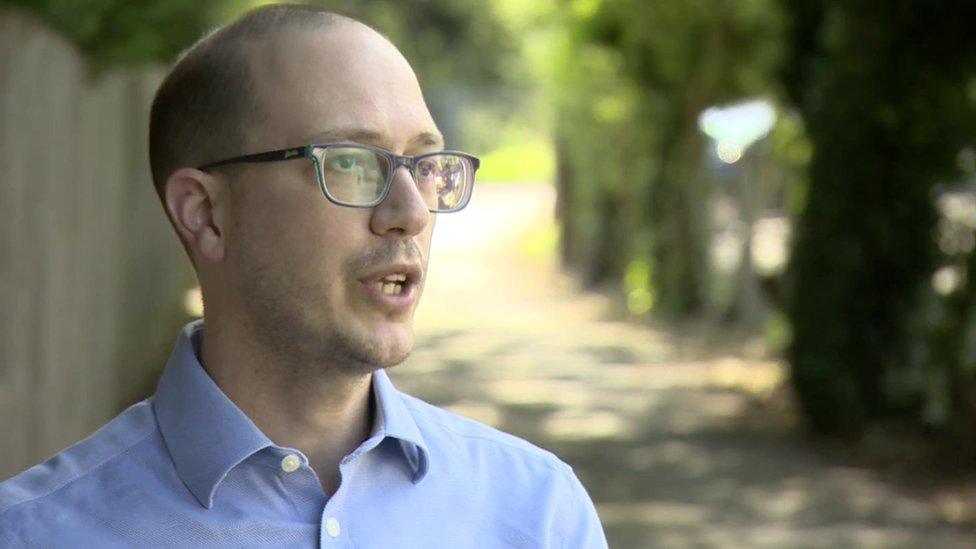
Jonathan Seager says the government needs to look at the sites on the green belt that could be developed
And the politics around the green belt further muddies the issue.
It is the UK government that sets councils' housing targets in England.
If the councils do not meet these targets within a "sound" local plan, developers can apply for planning permission anywhere in the borough.
In London, they also have to adhere to the London Plan from the mayor of London, or the mayor can take action. The current mayor, Sadiq Khan, has said he does not want development on the green belt.
A spokesperson for the mayor told the BBC: "The mayor makes no apologies for seeking to protect and enhance the green belt, which provides vital environmental and recreational benefits, prevents urban sprawl, and drives the use of previously developed land.
"The London Plan makes clear that we should build the homes Londoners need by developing on brownfield land, incorporating more green infrastructure in our streets and developments and using the hundreds of small sites across the capital."
The government also says it does not want building on the green belt and it's all up to local councils.
But the London Green Belt Council says councils are being put under pressure by the Ministry of Housing, Communities and Local Government to release green belt land for development.
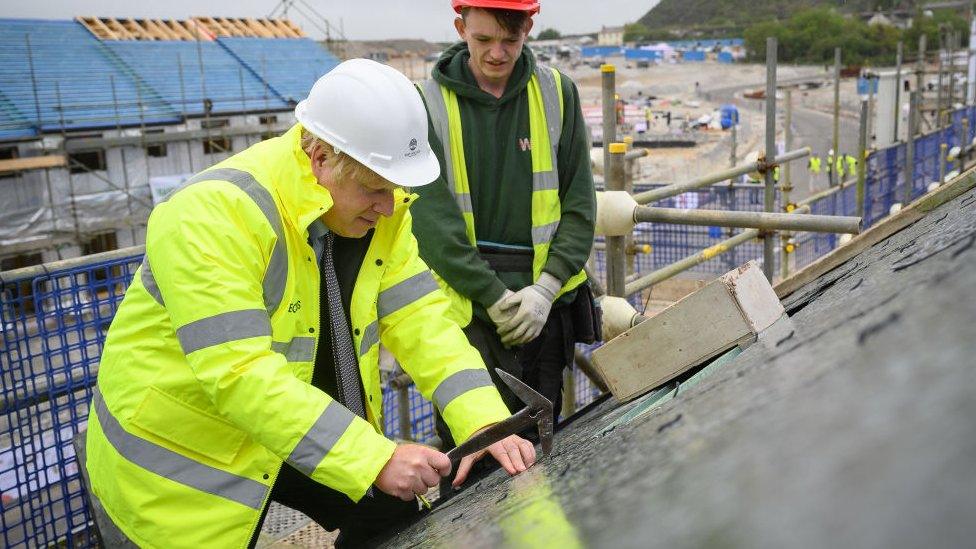
Planning laws announced by Prime Minister Boris Johnson would allow building on the green belt only in "exceptional circumstances"
In Enfield, more than 4,500 residents are on the council housing waiting list.
Enfield's local plan aims to build 1,246 homes per year, around a quarter of the 4,397 net new homes the government says the borough needs to meet housing needs.
Enfield Council's plan aims for 25,000 homes over the next 20 years.
But the council said there was not enough brownfield sites to meet this, so 6,000 homes will go on the green belt, which takes up around one third of the borough's land.
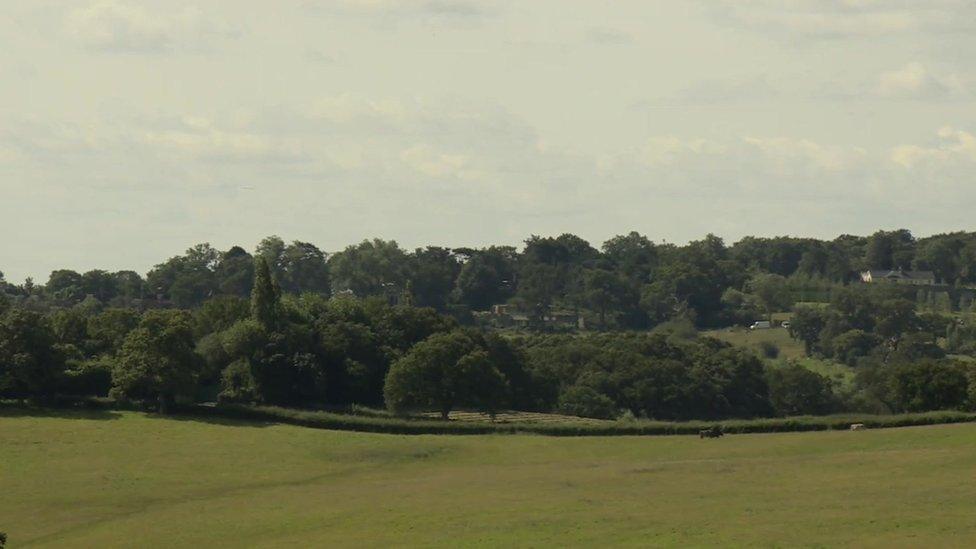
Campaigners in Enfield say building on green belt land will not "deliver the type of homes Enfield needs"
Campaigners say even when homes are built on the green belt, they will not be affordable.
On average, a home costs 13.7 times household income.
"If you look at green belt developments that have happened in Enfield, or near Enfield, they simply don't deliver any social housing at all," according to Matt Burn, from Better Homes Enfield.
"And, in fact, the amount of affordable housing is very small.
"So, building on the green belt simply doesn't deliver the type of homes Enfield needs."
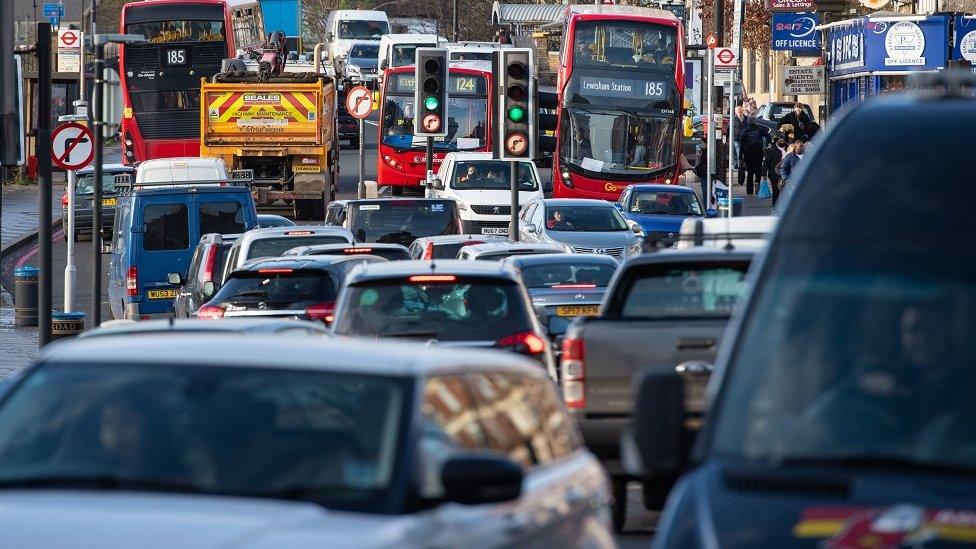
The green belt was designed to stop urban sprawl
Enfield Council says if it does not agree to a local plan, the risk of uncontrolled development all over the green belt is heightened.
The council's local plan is open for consultation, external until 12 September.
A Ministry of Housing, Communities and Local Government spokesperson said: "Decisions to release green belt land are made by local councils, not central government.
"Protecting the green belt is a priority and our national planning policy reinforces regenerating brownfield sites and prioritising urban areas.
"Our reforms to the planning system will protect our cherished countryside and green spaces as well as deliver high-quality and sustainable homes."
When it comes to London's green belt there are no easy decisions.
- Published28 April 2021
